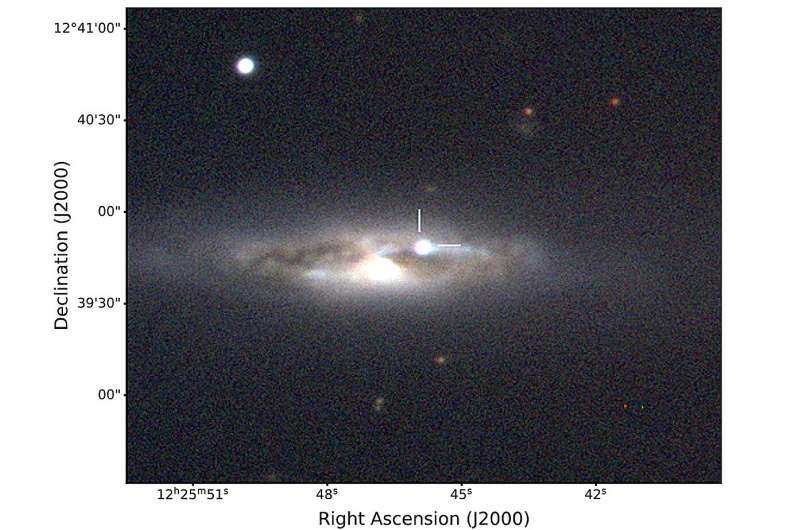May 14, 2024 report
This article has been reviewed according to Science X's editorial process and policies. Editors have highlighted the following attributes while ensuring the content's credibility:
fact-checked
preprint
trusted source
proofread
Supernova SN 2023fyq exhibited long-lasting pre-explosion activity, observations show

An international team of astronomers have performed photometric and spectroscopic observations of a Type Ibn supernova, known as SN 2023fyq. Results of the observations campaign, published May 7 on the pre-print server arXiv, indicate that the supernova experienced a long-lasting precursor activity, including pre-explosion outbursts.
Supernovae (SNe) are powerful and luminous stellar explosions. They are important for the scientific community as they offer essential clues into the evolution of stars and galaxies. In general, SNe are divided into two groups based on their atomic spectra: Type I and Type II. Type I SNe lack hydrogen in their spectra, while those of Type II showcase spectral lines of hydrogen.
Type Ibn supernovae are a subclass of interaction-powered SNe that show narrow helium lines in their spectra. Their light curves tend to be short-lived and some of them even resemble the evolution of fast-evolving transients.
Discovered on April 17, 2023 by the Zwicky Transient Facility (ZTF), SN 2023fyq is one of the closest Type Ibn supernovae. It is located in the nearby galaxy NGC 4388, at a distance of about 59 million light years. On June 23, 2023, it experienced a rapid re-brightening and was classified as a Type Ibn SN shortly after.
The group of astronomers, led by Yize Dong of the University of California, Davis, has investigated the pre-outburst history of SN 2023fyq as they have monitored the field of this supernova since 2019. By analyzing the collected data with various ground-based observatories, they aimed to shed more light on the progenitor of SN 2023fyq.
Dong's team was able to identify precursor emission from SN 2023fyq up to around three years ahead of the supernova explosion. This emission exhibits a relatively rapid rise in the last 100 days before the explosion.
The observations indicate that the precursor activity in SN 2023fyq can be explained by the mass transfer in a binary system consisting of a low-mass (with a mass of 2.5–3 solar masses) helium star and a compact companion. The results suggest that between 1,000 and 100 days before the explosion, the helium star expands substantially at the oxygen/neon burning phase, triggering mass transfer to its companion. This produced the detected precursor emission.
Furthermore, between 100 and 11 days before the explosion, this binary system experienced a shrinkage of its orbit, which increased the accretion rate onto the companion object and caused a rise in the light curve. Starting about 40 days ahead of the explosion, the final rise in the light curve is assumed to be likely due to either the core silicon burning or the runaway mass transfer caused by orbital shrinking, which triggered an eruptive mass ejection (of about 0.3 solar masses) with a velocity at a level of 1,000 km/s.
Summing up the results, the authors of the paper conclude that the final supernova explosion could be either due to the core-collapse of the helium star or due to the merger of the helium star with its companion.
More information: Yize Dong et al, SN2023fyq: A Type Ibn Supernova With Long-standing Precursor Activity Due to Binary Interaction, arXiv (2024). DOI: 10.48550/arxiv.2405.04583
Journal information: arXiv
© 2024 Science X Network




















